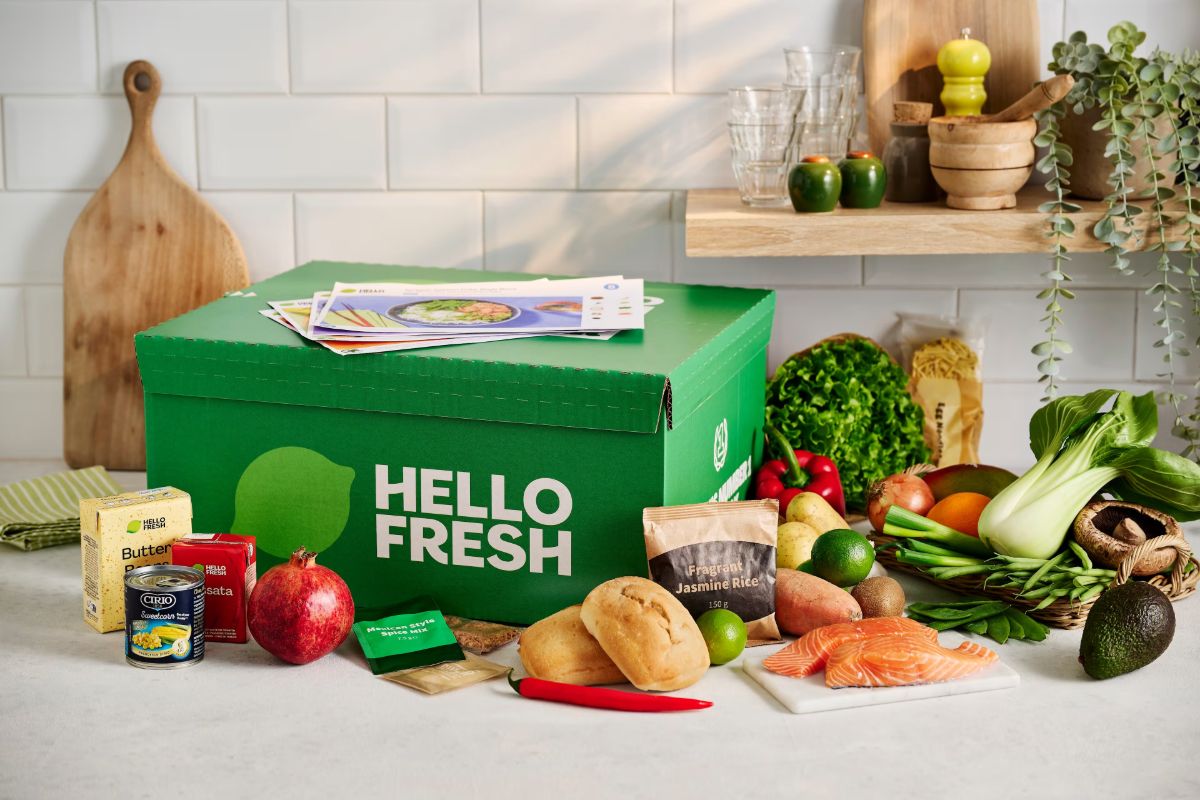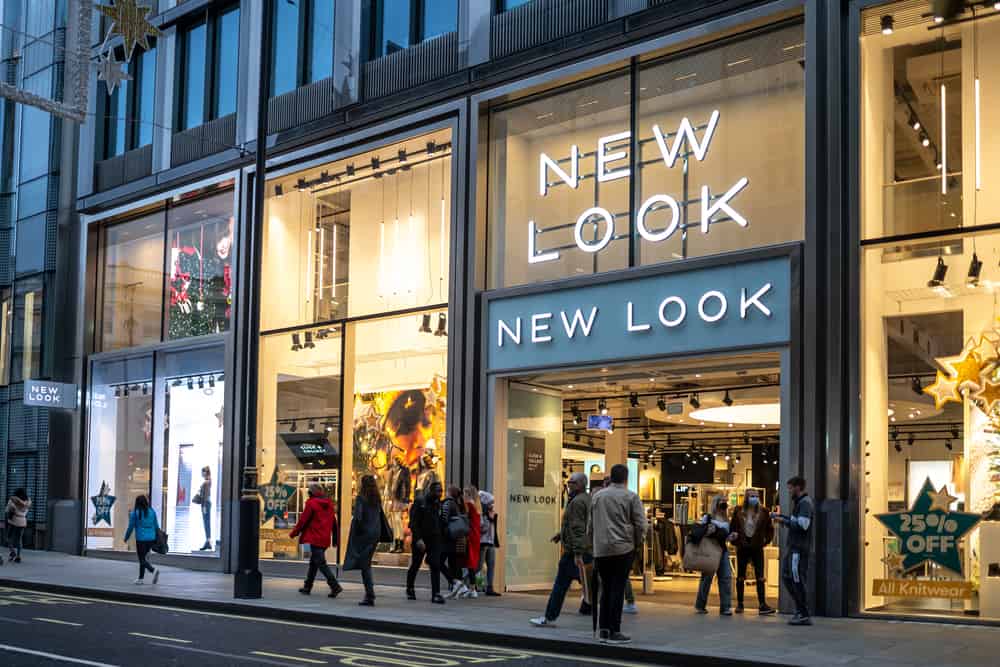Delivery is established as a clear point of differentiation in an omnichannel world. Chloe Rigby asks how retailers can use logistics to give themselves an edge in a competitive market
The retail logistics business is changing fast as it reorganises itself to meet the fast-moving needs of customers. It’s a pace of change that is probably the most significant in decades. And it’s one that’s moving the focus from the store as primary sales channel to an omnichannel world in which a range of other sales channels may play a greater part, and in which the role of digital is becoming ever more central. Driving the change is the fact that delivery is now a distinguishing factor between retailers, as customers opt for the fastest, most reliable as well as the most cost-effective means of getting the goods that they have ordered.
CONVENIENT DELIVERY
The influence of digital is perhaps at its most marked in the emphasis on delivering goods at the time and place that is most convenient to the customer. It’s a single idea that has sparked not only new delivery methods but inspired the launch of new logistics companies. Today it’s routine for customers to order as late as 10pm for next-day delivery, with retailers such as Next . Customers who live in the UK’s main cities can also order online for delivery within 90 minutes or in an hour-long window of their choosing from those retailers who have signed up to the Shutl service, among them Argos , Oasis and Warehouse. It’s getting hard to recall those not-so-distant days when 28-day delivery was routine for mail order.
The search for convenience has also resulted in the idea of delivery to a collection point, where customers can collect at a time that suits them. Click-and-collect services that enable the customer to order online and collect from a retailer’s branch store are growing fast. And supermarkets are also fast expanding the use of click and collect for groceries: both Asda and Tesco now offer drive-in collection for supermarket orders placed online. Asda is now working towards same-day delivery windows for those orders, which it expects to introduce this year.
Meanwhile, as chain retailers ‘right size’ their store estates in the light of ecommerce, the typical size of a national retail chain is shrinking, while pureplays and multichannel retailers are looking to new ways of extending store presence. Companies are finding new options in collection services, such as CollectPlus, that enable customers to collect their goods – and return them to – outlets such as convenience stores and petrol filling stations, as well as locker-bank services such as those from ByBox .
“People call it omnichannel retail or multichannel, but for me this is just the new norm,” says Neil Ashworth, chief executive of CollectPlus. “This is the way the market has evolved. We’re going through the most significant change in retail that’s been seen since the industrial revolution. It’s a really exciting time to be in it.”
MOVING UP THE SUPPLY CHAIN
It’s a change that has significant effects on the way that retailers are now organising not only their delivery methods, but also supply chain and inventory. Imaginative new approaches to that supply chain have given retailers the ability to drop ship direct from suppliers, extending their range exponentially.
But while this is a time of exciting change, it’s also one of enormous complexity. Omnichannel logistics could, in theory, see retailers look to deliver from any point, in a supply chain that now includes the store, the fulfillment warehouse and even the customer’s house in the case of returns, to any point.
Stuart Higgins, retail partner at LCP Consulting, says that as retailers move to achieve that, the way they manage store assortment and the placement of inventory will be “critical” in future. “There won’t be the room to deploy inventory in store in the same way that it’s deployed now without compromising their ability to maintain availability for online customers, for example,” he says.
“That will tend to lead to a situation where more retailers are holding more inventory centrally and deploying it more frequently in smaller quantities and just in time to meet the needs of the consumer, whether it be in store, online or through click and collect.”
This will demand, he says, “a very different and much more agile supply chain” that can “respond to the needs of the customer and position inventory accordingly”. That will be driven in turn by data. Retailers will need to know what is selling, and where. That will inform as to where stock is delivered. It’s also likely that they won’t deliver to stores in the bulk that they have traditionally, opting instead to replace single items once sold and keep inventory more flexible in order to fulfil potential orders elsewhere.
SINGLE VIEW OF THE PRODUCT
In order to achieve this, retailers will be considering how they can have a single view of the product in the same way as some are starting to boast a single view of the consumer.
Andrew Dalzeil, VP of products and marketing at supply chain software specialist Kewill, says it’s important to keep track of products which now may be held at a variety of locations, whether that’s the store, the supplier or the warehouse. The answer lies in an order management system that integrates with back end functions, avoiding duplication of effort and delivering analytics that help run the business. Direct despatch, for example, can reduce costs and lead times. “The success of this model,” says Dalzeil, “is reliant on the retailer and supplier putting processes in place to share order data and collectively ensure delivery promises made to customers are kept.”
That’s a thought echoed by LCP’s Stuart Higgins. “Systems will need to understand and have a single view of inventory across the business, such that inventory can be reserved for a particular customer order, and sent to fulfil that customer order through the most cost-effective customer channel,” he says. When that happens retailers will also be able to serve the needs of consumers browsing on mobile who want to see if an item is in stock at a local store (see the merchandising feature on page 14 for more on this). But there’s a way to go before most retailers can achieve that as the job of the single view of the supply chain, as many are still working with legacy systems.
OMNICHANNEL LOGISTICS IN THE STORE
Indeed, many are still working not only with legacy systems, but with legacy estates, acquired to serve the needs of a store-centric retail environment. “Increasingly as new store space is opened, retailers are opting for smaller stores and putting less inventory in those stores and opting to display that in very different ways to increase theatre in stores,” says Higgins. “Where you have larger retailers with large footprints that aren’t necessarily warranted to service the needs of today’s customer, they are increasingly looking to increase range, put different offers in-store, whether boutique sellers, coffee shops, and also increasing displays to increase theatre in store and make it a more exciting customer proposition that doesn’t warrant the same level of display that a traditional shelf would require.”
Some, indeed, are showing inventory or merchandising in store that cannot be bought but has to be ordered online for home fulfilment. In HouseofFraser.com stores customers browse online and buy in-store. But other retailers are also starting to hold less stock in store. Marks & Spencer recently became an early adopter of the virtual rail in store, a set of large screens that extends a physical rail that carries a basic set of sizes, shapes and colours. Clothes in other shapes, sizes and colours can be viewed on the virtual rail and ordered into store, leveraging the click-and-collect system discussed earlier.
LOOKING TO THE FUTURE
Today the store is one of a range of delivery options that consumers increasingly demand, says Ashworth of CollectPlus. He sees this developing further in the future, as retailers leverage the convenience stores in the CollectPlus network as well as their own, all alongside home delivery.
“I think it will be about the retailer coming together with a portfolio of different options, potentially using different providers to create those.
“That may mean a need for greater collaboration between major carriers in the UK as a way of managing the level of activity to drive efficiencies into the overall logistics network to make sure the price is right for the consumer.”
Looking further forward, he predicts that home delivery will remain stable while click-and-collect will continue to grow. “We’ll also see the increasing use of same-day services, timed services, day-of-choice services. It’s that portfolio approach that will become the norm in major retailers’ sites, will give retailers choice as to whether they want to consume the retail offering in a way that suits their lifestyle.”
It seems safe to say that as the logistics market changes, it will become increasingly complex to manage, and that single view of the product will be an important first step towards this. But the market will also be an interesting one, as retailers meet and exceed these challenges.
Speaking from Experience

CHOOSING THE RIGHT CARRIER
“Customer preferences around the tangible aspects of shipping are increasingly influencing carrier and service selection. Choosing the right carrier is becoming more and more important, with social media networks frequently rife with complaints about poor service from certain companies, leading to potential brand damage by association for retailers.”
Andrew Dalzeil, VP of products and marketing, Kewill

MOVING THE SHELF EDGE
“Retailers now need to start thinking about where does the shelf edge fall? In many cases that’s not in store any more but a virtual one, through click and collect and home delivery. The way that retailers manage their store assortment and inventory placements within the supply chains, service different sales channels will be critical in the future.”
Stuart Higgins, retail partner, LCP Consulting

LESS STORES
“A footprint that a retailer needs in the new age is different from that seen 10-15 years ago. All of the indications are that the number of outlets on the high street will reduce during the current decade maybe by as much as 30 per cent.”
Neil Ashworth, chief executive, CollectPlus
What’s Changed
Now that logistics is firmly established as a point of competition – of differentiation – the race is firmly on for retailers to improve visibility of their own supply chains and increase the agility with which they can get stock, whether they hold it in their immediate inventory or count it in their internet only ranges which suppliers consign to the customer.
Home Delivery: Asos Moves to a 15-minute Delivery Window
While new methods of delivery are constantly emerging, the largest part of the omnichannel delivery market remains home delivery.
Asos , which also delivers through services such as CollectPlus, recently launched a new Follow My Parcel delivery option. This allows customers to see exactly where their parcel is and to know, down to 15 minutes, when it will be delivered. Customers are sent a text message or email on the day of scheduled delivery with a one-hour delivery time slot. They can then track the progress of their delivery on their desktop or mobile device. A real-time countdown to their own delivery gives them a 15-minute delivery slot in which to expect the parcel. At any point along the way, customers can redirect their parcel to a neighbour’s house or put it back for redelivery another day.
The innovation comes through Asos’ partnership with logistics business DPD . Asos chief executive Nick Robertson sees the benefit as being the flexibility that this affords to customers, who no longer need to wait in for more time than required in order to take delivery of their goods. “Knowing exactly when a parcel is being delivered helps our customers plan their day,” he says, “to be at home when they need to be in for a delivery or to let them get on with what they need to do by opting to reschedule or choosing the deliver to neighbour option.”
He says this important because “a good delivery experience is a key part of keeping our customers happy”. Not only does it encourage them to buy again, but it also builds “brand warmth”. Robertson continues: “We want to continue to exceed customer expectations and this is an example of Asos yet again redefining the online retail experience.”
Dwain McDonald , chief executive of DPD, says the service is a significant step forward that “shows the level of commitment we are making to reinvent the delivery phase of online retailing”.
He adds: “DPD is already the fastestgrowing home delivery company in the UK and we are continuing to invest heavily in our technology, our people and our delivery infrastructure to ensure that we meet the demands of the online retail sector and provide a truly innovative service that outstrips anything else on the market.”





